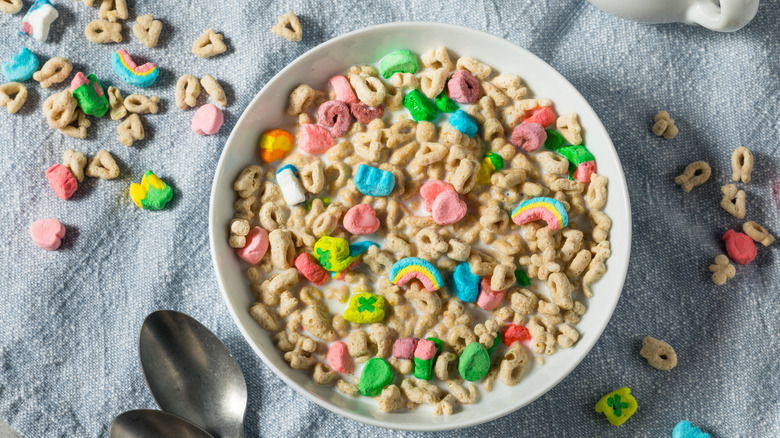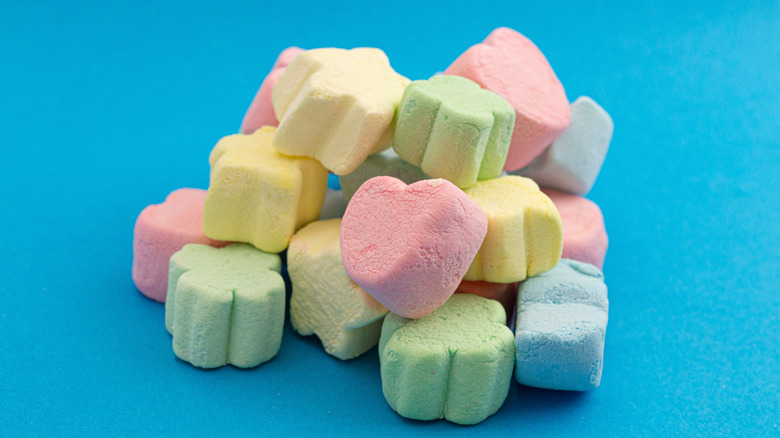Why Aren't Cereal Marshmallows Soft Like Regular Ones?
Bobbing, buoyant, sweet, and frankly mysterious, cereal marshmallows exist almost outside of classification. Officially, at least, they are still marshmallows. However, unlike your typical marshmallow (which you can make with only three simple ingredients), the kind found in cereal aren't fluffy or squishy. Most cereal marshmallows are dry and even slightly crunchy, only softening up when stirred into milk (seriously, try adding your milk before cereal). It's a bit magical, really, watching those small little puffs (called marbits in Lucky Charms, at least) soften up in your bowl, dispersing their flavors and colors throughout your milk. Still, others find the dry bits of sugar to be a nuisance, an insult to the soft and squishy confection. Regardless of your marshmallow views, there still remains the question as to why cereal marshmallows are so different from other varieties of the sweet treat.
It really all comes down to moisture. Regular marshmallows contain water. This moisture is great for keeping the treats soft, but it's not so great in long term storage situations. The main risk of adding in regular marshmallows to cereal is that its water content will seep out in the storage process, turning the cereal stale. Cereal marshmallow bits contain little to no water, meaning they are shelf stable and won't go messing up the crunch of your breakfast bowl. As a bonus, once added to milk, the marshmallows rehydrate beautifully, fluffing up to a soft and spongy texture that is absolutely delicious.
How cereal marshmallows are made
So we know why cereal marshmallows are so different from their puffed up counterparts, but have you wondered how they're made? While the exact recipe for most cereal companies' marshmallows is kept close to the vest, we do have some idea as to how the sweet crispy bits are manufactured.
As far as Lucky Charms go, the very first cereal with marshmallows, the key seems to be found in the marshmallows' lack of moisture. While the marbits contain most of the same ingredients as regular marshmallows, water isn't one of them. This, along with cornstarch (an ingredient that can also be used to clean your kitchen), creates structure without chewiness and is most likely responsible for their brittle, crunchy texture, while the added gelatin gives the marshmallows their chewiness when added to milk. Lucky Charms marshmallows also do not have the whipping aid ingredient which would help them achieve a fluffy texture, another reason they are more dense than the standard confection.
This, of course, is just one example. Different cereal companies most likely have proprietary recipes for their respective cereal marshmallows, which can cause slight variations. However, regardless of how exactly they get their unique texture, these whimsical little marshmallows are undeniably delicious.

